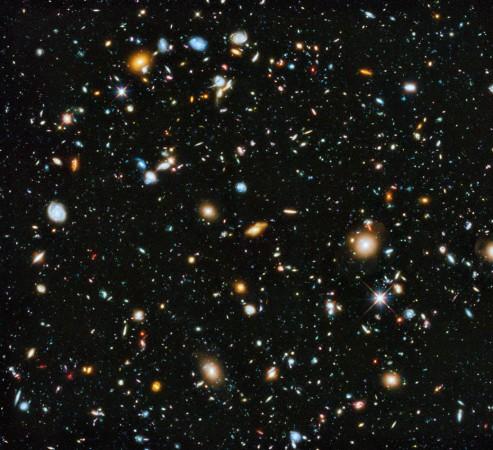
A new revelation has been made about the universe, which states that it comprises a minimum of 2 trillion galaxies! This is approximated to be 20 times greater than previously believed.
Also Read: Revealed! 97% of human body is made up of stardust!
An international team of astronomers from University of Nottingham with Christopher Conselice, Professor of Astrophysics as lead author, carried out this research.
The researchers made the discovery with the help of a 3D model of images taken by NASA's Hubble Space Telescope over the past two decades.
With the help of the Hubble telescope, they were able to guesstimate the presence of 100 to 200 billion galaxies. Only 10% of those galaxies could be analysed by the researchers, the remaining 90% require tailor-made telescopes, just to be seen.
"It boggles the mind that over 90% of the galaxies in the universe have yet to be studied," Christopher Conselice, said in a statement.
"Who knows what interesting properties we will find when we observe these galaxies with the next generation of telescopes?" he said further.
The research was funded in part by a research grant awarded to Aaron Wilkinson, an undergraduate student back by the Royal Astronomical Society; the researchers came up with the findings after 15 years of work under Christopher Conselice.
Wilkinson is presently a PhD student at the University of Nottingham. He was also a part of the research and made the initial galaxy-count, which set the stage for the larger-scale study.
The astronomers converted the 'pencil-beam' images, taken by Hubble and other deep space telescopes around the globe, into 3D images. With the help of these images, the density of the galaxies, as well as the volume of small space regions were evaluated.
This led researchers to conclude that the telescopes missed a large number of galaxies as they were too distant and faint.
"This is very surprising as we know that, over the 13.7 billion years of cosmic evolution since the Big Bang, galaxies have been growing through star formation and mergers with other galaxies. Finding more galaxies in the past implies that significant evolution must have occurred to reduce their number through extensive merging of systems," Conselice stated.
The work has been published in the Astronomical Journal.

















